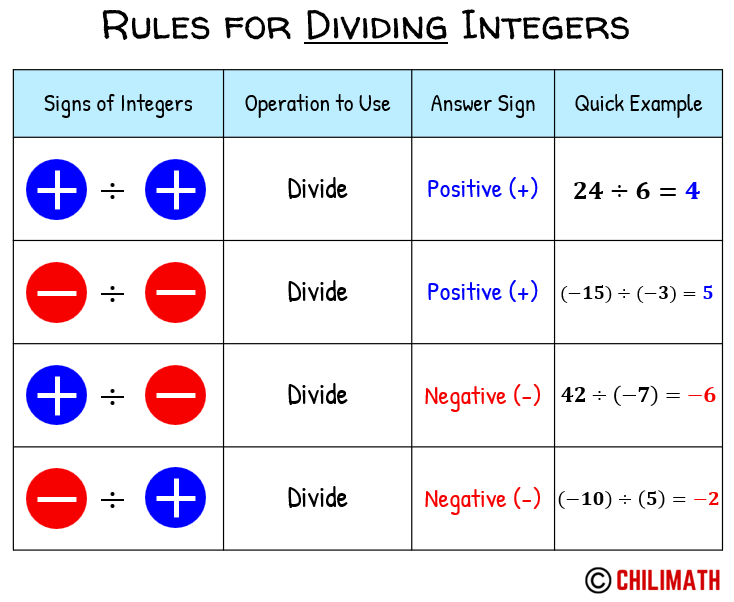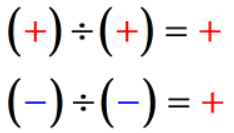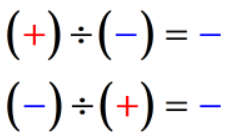Dividing Integers
Below is a quick summary for the rules of dividing integers.

Now that you’ve learned how to multiply integers, dividing integers should be a breeze. The reason is that they follow very similar rules.
Rules on How to Divide Integers
Step 1: Divide their absolute values.
Step 2: Determine the sign of the final answer (known as a quotient) using the following conditions.
- Condition 1: If the signs of the two numbers are the same, the quotient is always a positive number.

- Condition 2: If the signs of the two numbers are different, the quotient is always a negative number.

Examples of Integer Divisions
Example 1: Divide the two integers below.

Solution: First, find the absolute values of the two integers.

Next, divide the numbers or find their quotient.

Finally, determine the final sign of the answer or quotient. Because we are dividing two integers with the same sign, the quotient will have a positive sign.

Example 2: Divide the two integers below.

Solution: Divide the absolute values of the two integers.

Following the rules stated above, when dividing integers with different signs the final answer (quotient) is negative.

Example 3: Divide the three integers below from left to right

Solution: To divide three or more integers, it is important that we perform the division operation from left to right. In addition, we can accomplish it by dividing two integers at a time. The parenthesis shows the first two integers to divide, and whatever is the result or quotient will be divided by the next one. So we have here, – 252 divided by + 7 is equal to – 36. It is a negative quotient since we are dividing two integers that have different signs. Then we take that quotient and divide it by the integer that follows. We get –36 ÷ –9 = + 4. The answer is positive since we are dividing integers with the same sign.
![-252/(+7)/(-9)=[(-252)/(+7)]/-9=(-36)/-9=+4](https://www.chilimath.com//wp-content/uploads/2018/03/8-negative-252-divided-by-positive-7-divided-by-negative-9-is-equal-to-positive-4.gif)
You may also be interested in these related math lessons or tutorials:
